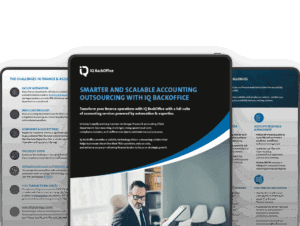 Accounts payable automation (aka AP automation) is a technology that attempts to streamline the accounts payable process. In this article, we take a closer look at its components, how it is implemented, and whether it makes sense as a stand-alone solution.
Accounts payable automation (aka AP automation) is a technology that attempts to streamline the accounts payable process. In this article, we take a closer look at its components, how it is implemented, and whether it makes sense as a stand-alone solution.
What are the components of Accounts Payable Automation?
The accounts payable process has multiple components, and to understand what accounts payable automation actually does, it is best to discuss the automation in each part of the process:
- Invoice Receipt – The software should be able to ingest invoices received via email or those scanned and uploaded
- Invoice Conversion – Some software includes Optical Character Recognition (OCR) which allows the computer to “read” the invoice and convert characters to text. This is in lieu of data entry. However, OCR software is notoriously unreliable and therefore human beings need to validate the data extracted from the invoices.
- Data Entry – The software allows staff to enter data from the invoices, generally, while they are displayed on the screen
- Approval Routing – The software routes invoices for electronic approval, either by allowing system users to select the next approver for an invoice or based on pre-established approval paths
- Coding – Allows users to enter general ledger coding for non-purchase order invoices; some software provides limited coding rules such as coding a bill from the telephone company to the Telephone account, but this is fairly simplistic and coding still needs to be entered manually
- Matching – The more sophisticated software will perform three-way matching between purchase orders, invoices, and receipts. However, this is generally nowhere near as robust as the capability in the more sophisticated ERP systems such as SAP or Oracle, so manual matching is often required.
- Disbursement – Some software allows users to select and approve invoices for payment and then sends a payment file to a third-party bank or vendor for check printing, ACH, or virtual card payments.
How is AP Automation Implemented?
AP is automated in the following ways:
- Document receipt – allowing invoices to be ingested from emails or various types of data files such as CSV or EDI files
- Electronic approval routing – allows invoices to be routed electronically for approval to all person(s) that need to approve such invoices
- Automated matching – some AP automation software automatically matches invoices to their respective purchase orders and receipts
- File extract to the accounting system – the software sends a file of approved invoices to be imported into the accounting system
- Disbursement – lets users select and approve invoices for payment, and sends payments to banks and other payment processors
Is AP Automation Alone Worth It?
Accounts Payable automation generally provides little to no improvement in productivity though. While there are some efficiency improvements, they are in areas where there is not much effort to begin with, such as approval routing or disbursement. The areas with the most effort such as conversion, coding, and matching are areas where the software generally does a poor job.
Not only that, most of the effort in accounts payable is outside of these functions. Problem-solving, customer service, statement reconciliation, 1099s, responding to vendor emails and phone calls, assisting managers with accounts payable issues, and so on are all areas where the software has no impact.
In fact, studies have shown that accounts payable automation software generally has a negative return on investment as the software is generally quite expensive.
How can IQ BackOffice Help? Learn about our AP Outsourcing service and our full range of outsourcing services.
Read More about this topic:
How Much Does Accounts Payable Automation Cost?
Top 7 Benefits of Accounting Automation and Outsourcing
Accounts Payable Outsourcing Transition – Top 5 Mistakes Not to Make
Accounting Outsourcing – Top 5 Rookie Mistakes
Outsourcing Accounting Processes – Does It Actually Save Money?







